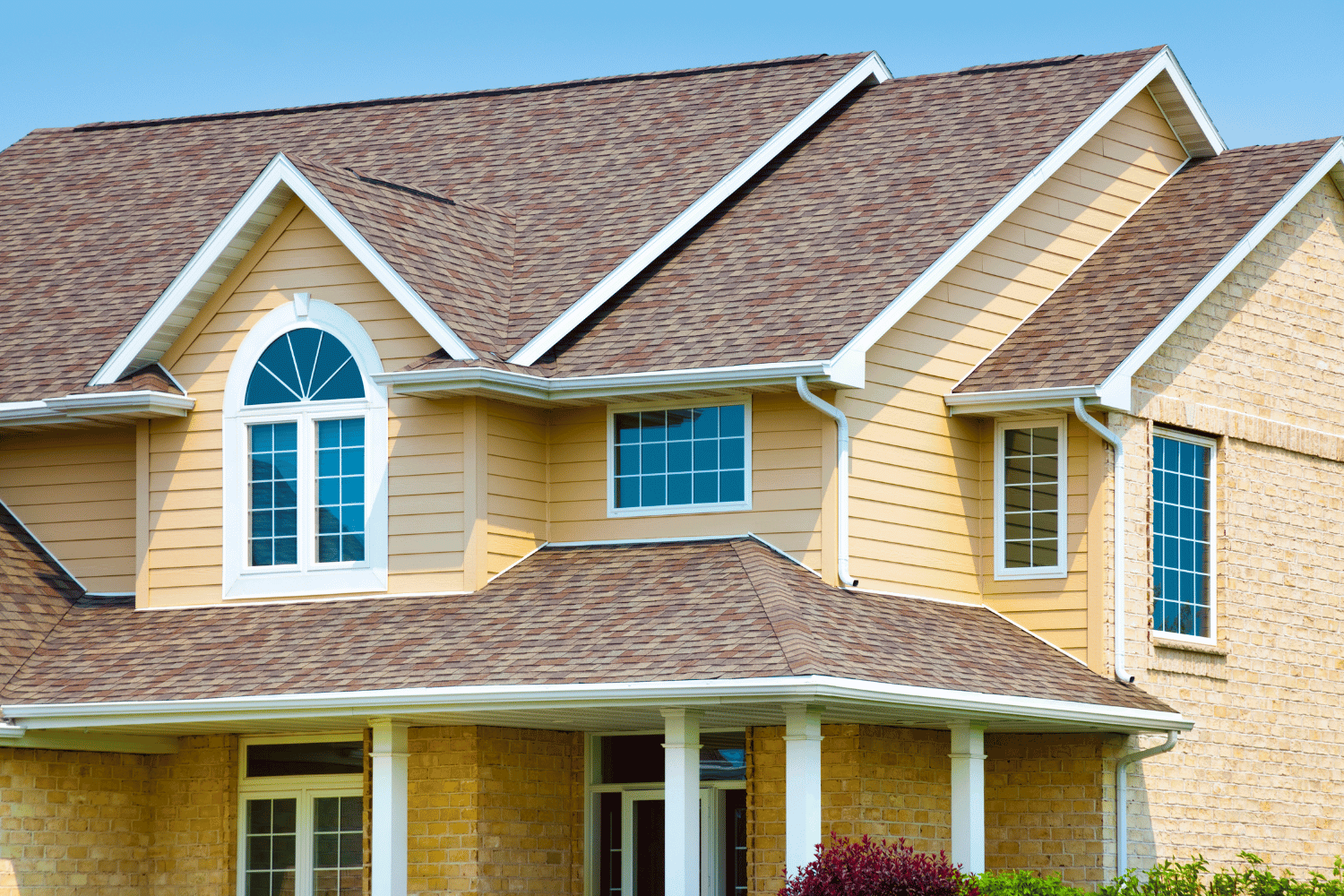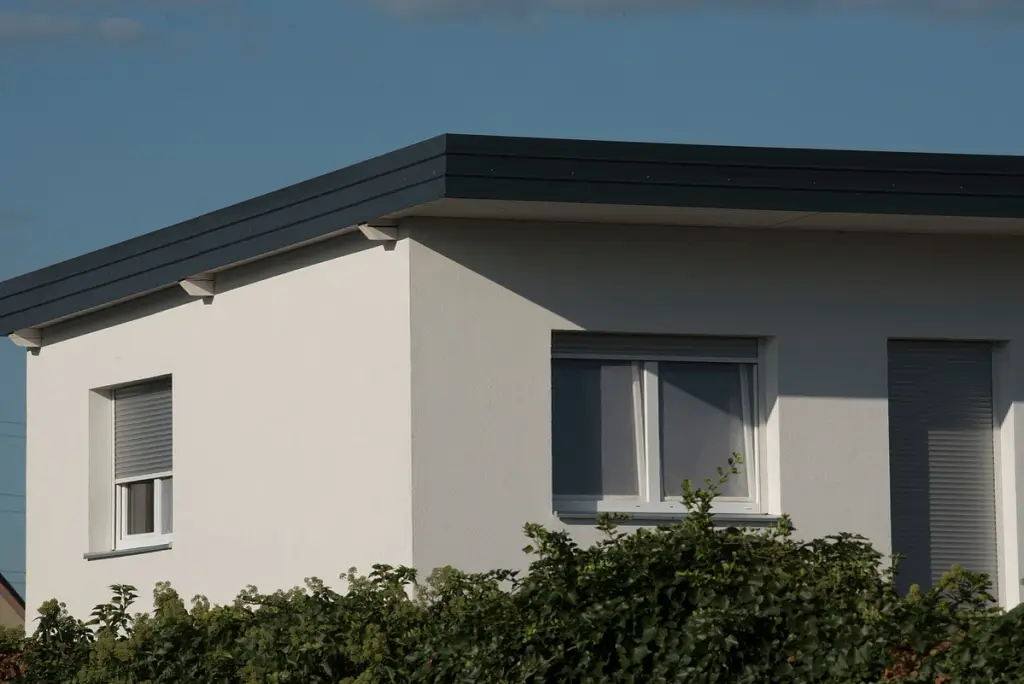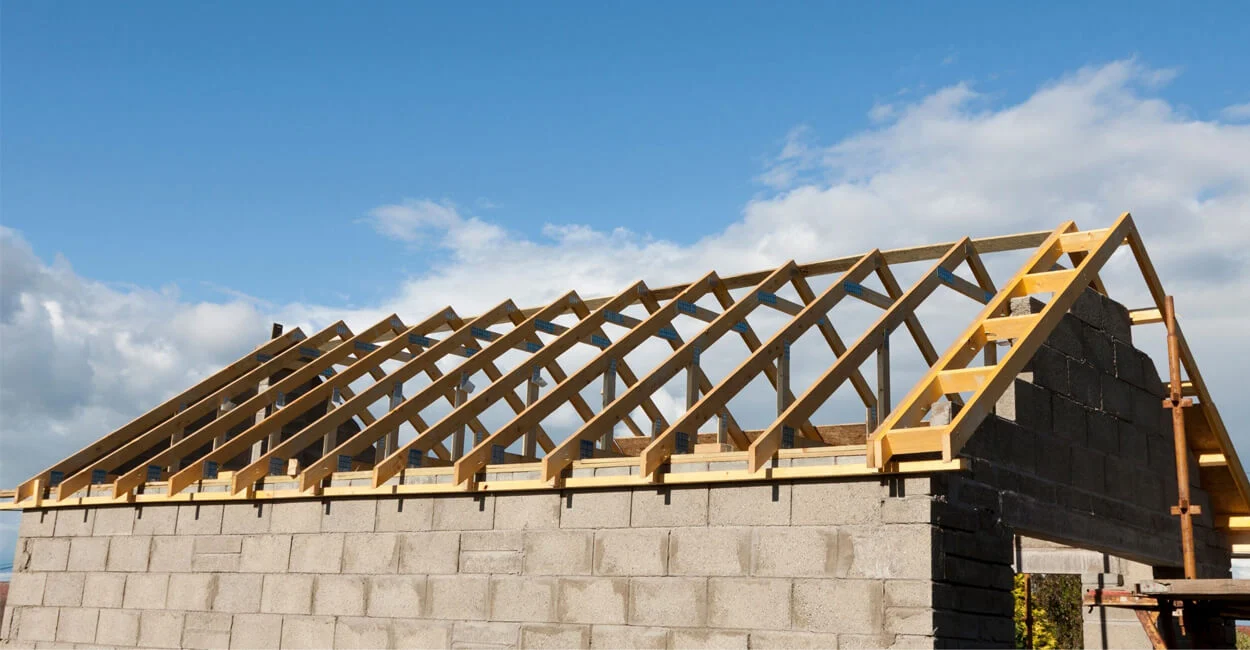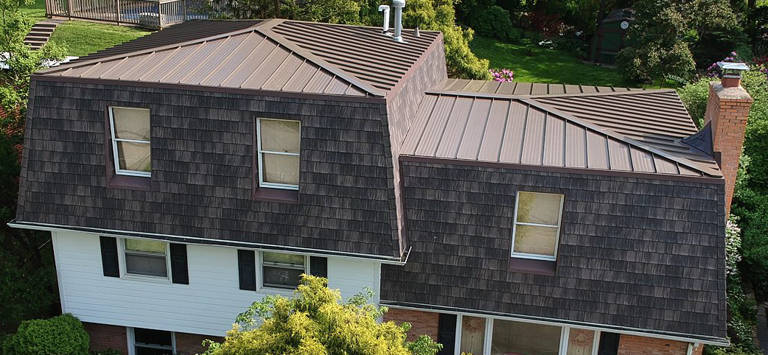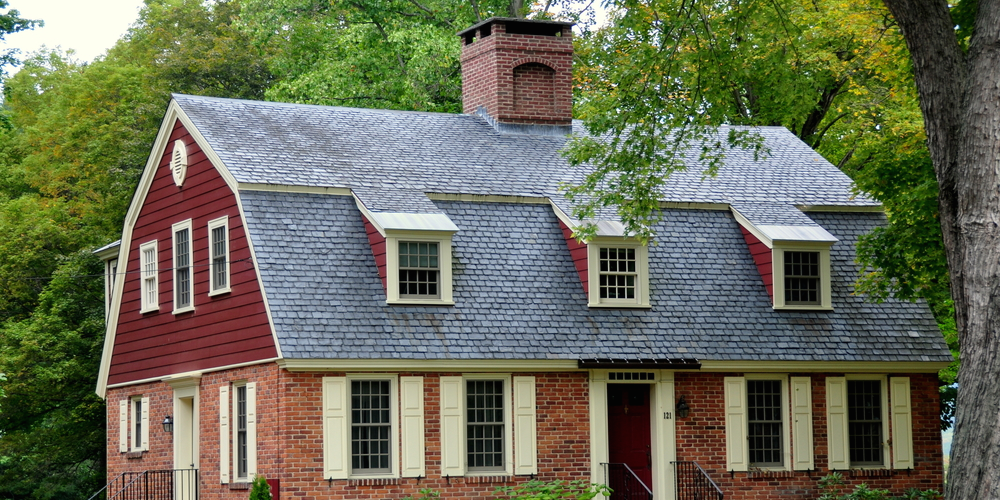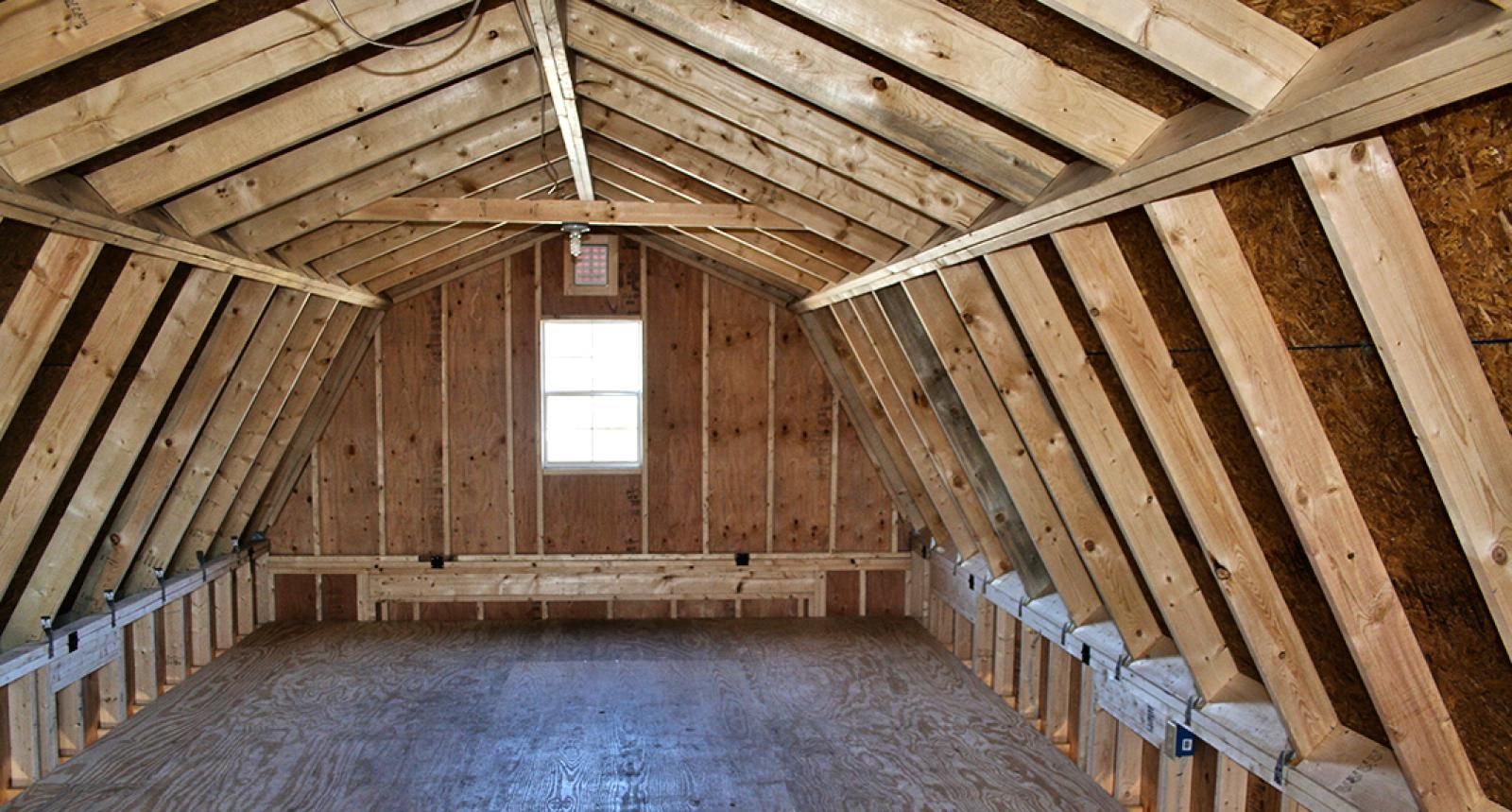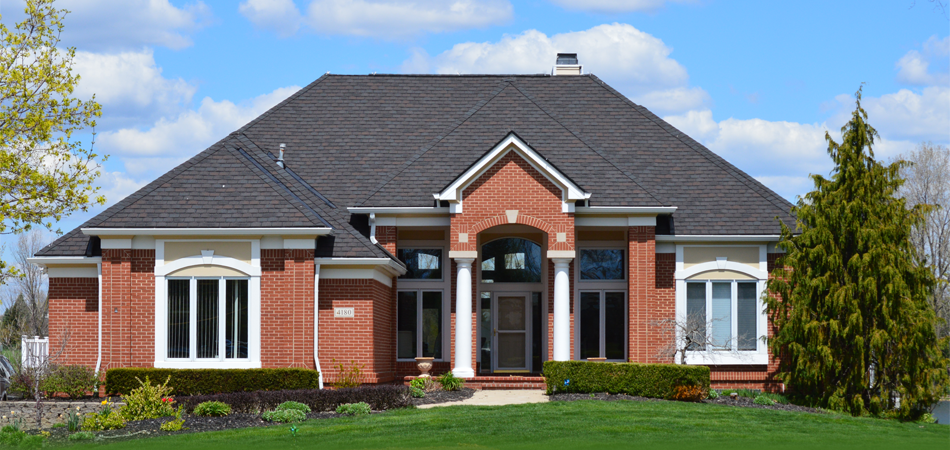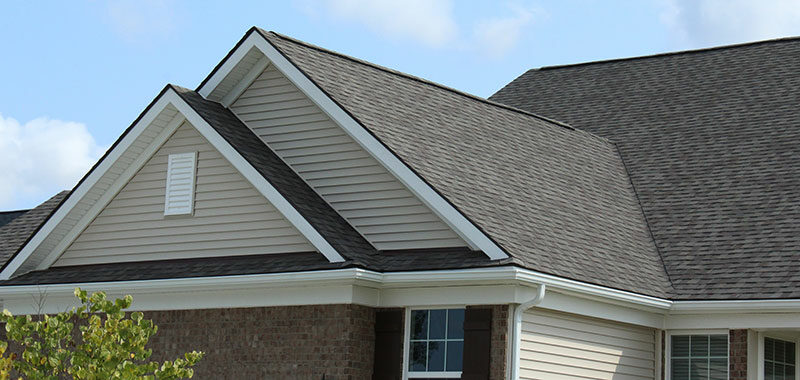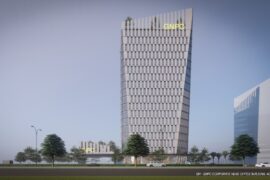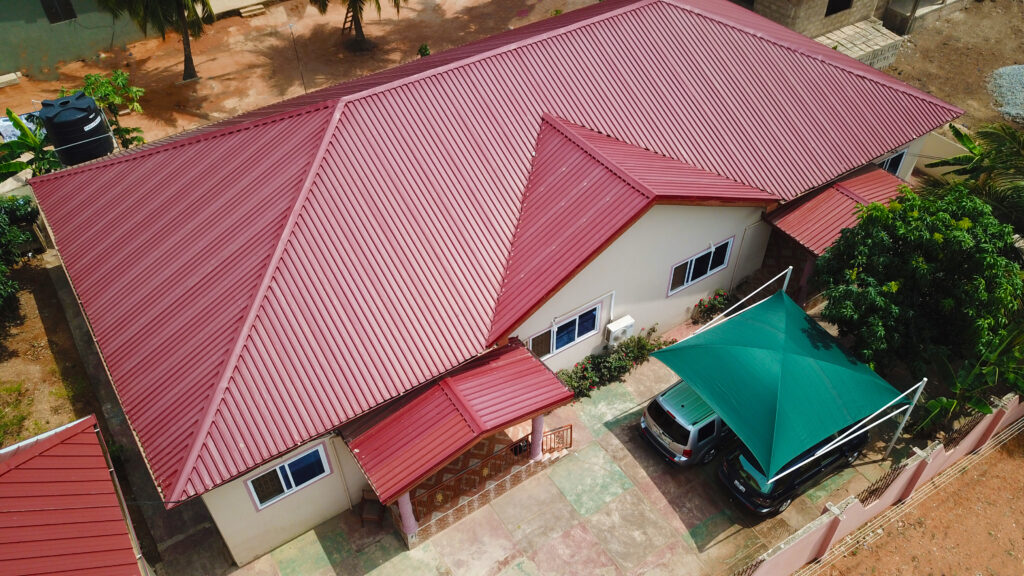Are you tired of the same old cookie-cutter roofs? Well, you’re in luck! There’s a whole world of roof options out there for your building projects. From flat roofs to pitched roofs, mansard roofs to gambrel roofs, hip roofs to gable roofs, the possibilities are endless. But which one should you choose? In this discussion, we’ll explore the different types of roofs available, their unique features, and how they can transform your building into a true masterpiece. So, buckle up and get ready to discover the perfect roof for your next project.
Flat Roofs
Flat roofs are commonly used in building projects for their sleek and modern appearance, as well as their practicality in certain situations. When it comes to roof design, flat roofs offer increased durability and can be a cost-effective option.
One of the main advantages of a flat roof is its increased durability. Unlike sloped roofs, flat roofs have a sturdy and solid construction that can withstand heavy loads, such as equipment or solar panels. This makes them ideal for commercial buildings or areas with limited space for additional structures.
Additionally, flat roofs are cost-effective options for building projects. They require fewer materials and labor compared to sloped roofs, resulting in lower construction costs. Moreover, the simple design of flat roofs makes maintenance and repairs easier and less expensive.
Flat roofs also provide additional usable space. They can be utilized as rooftop gardens, outdoor recreational areas, or even as storage spaces. This adds value to the building and maximizes the available square footage.
Pitched Roofs
Pitched roofs are a popular choice in building projects due to their classic design and versatility. They are characterized by their sloping angles, which not only add aesthetic appeal but also provide increased durability and energy efficiency. The steep slope of a pitched roof allows for better water drainage, reducing the risk of leaks and water damage. Additionally, the angle of the roof allows for efficient heat distribution, making it easier to regulate the temperature inside the building. This can lead to energy savings and lower utility bills. The design of a pitched roof also allows for better ventilation, which helps to prevent the buildup of moisture and mold. Furthermore, pitched roofs are known for their longevity, as they are less prone to wear and tear compared to other roofing types. Whether you prefer the classic gable roof or the more unique hip or mansard roof, a pitched roof is a reliable choice that combines durability, energy efficiency, and timeless design.
Read Also | 5 Reasons Why Hidden Roof Is Not The Best For Your Project
Mansard Roofs
Mansard roofs, characterized by their distinct double-sloped design, are a popular choice for building projects due to their unique aesthetic appeal and functional benefits. One of the advantages of a mansard roof is its versatility. The steep slopes on all sides provide ample space for additional living areas or storage, making it an ideal option for maximizing the usable space in your building. Another advantage is the enhanced energy efficiency. The double-sloped design allows for better insulation and ventilation, reducing the energy consumption and lowering utility costs.
When it comes to mansard roof construction, it typically involves a combination of steep and shallow slopes. The lower slope is usually steeper than the upper slope, creating a distinctive look that sets the mansard roof apart from other roofing styles. The construction process involves framing the roof with trusses or rafters and installing the appropriate roofing materials, such as shingles or metal sheets. Proper installation and maintenance are crucial to ensure the longevity and durability of the mansard roof.
Gambrel Roofs
Gambrel roofs are known for their unique design that sets them apart from other roof types. With their steep slopes on the upper part and gentle slopes on the lower part, gambrel roofs provide increased attic space, making them perfect for homeowners looking for extra storage or living space. Additionally, gambrel roofs have a classic barn-style appeal that adds charm and character to any building project.
Unique Roof Design
With its distinct shape and versatile design, the unique roof known as the Gambrel Roof offers a multitude of benefits for building projects. One of the advantages of this type of roof is its ability to accommodate a wide range of roofing materials. Whether you prefer shingles, metal, or tiles, the Gambrel Roof can support them all. This flexibility allows you to choose the roofing material that best suits your aesthetic preferences and budget. Additionally, the Gambrel Roof is known for its energy efficiency. The steep slope of the roof allows for effective water drainage, preventing water from pooling and potentially causing damage. Furthermore, the design of the Gambrel Roof allows for better insulation, reducing heat loss and improving energy efficiency in your building.
Increased Attic Space
Take advantage of the unique design of Gambrel Roofs by maximizing your attic space. Gambrel roofs are characterized by their two slopes on each side, creating a steeper upper slope and a more gradual lower slope. This design allows for increased attic space, making it perfect for maximizing storage in your building projects. With a Gambrel roof, you can have more usable space in your attic compared to other roof types. This extra space can be utilized for storage or even converted into additional living areas. Furthermore, Gambrel roofs are known for their energy efficiency. The shape of the roof allows for better insulation and ventilation, reducing energy consumption and costs. So, if you’re looking to maximize storage and improve energy efficiency, consider using a Gambrel roof for your building projects.
Classic Barn-Style Appeal
Maximizing the charm of a classic barn-style, Gambrel roofs offer a unique appeal to any building project. With their distinct design, these roofs evoke a sense of nostalgia and timeless beauty. Gambrel roofs are commonly associated with classic barn style architecture, known for their steeply sloping sides and symmetrical shape. These roofs provide more usable space compared to other roof types, thanks to their steeper pitch and increased headroom. The upper part of the Gambrel roof allows for ample attic space, making it ideal for storage or even converting into additional living areas. To enhance the classic barn-style appeal, rustic roofing materials such as wood shakes or metal shingles can be used. This combination creates a charming and picturesque aesthetic that adds character to any building project.
Trending Story | 10 Facts About DBS Roofing Ghana Limited (MUST Know Before Buying)
Hip Roofs
When it comes to roof design, hip roofs are a popular choice. They offer several benefits, such as increased stability and durability, as well as improved resistance to strong winds. Hip roof construction involves the use of trusses or rafters that create a sloping design on all sides, forming a pyramid-like shape.
Hip Roof Design
What are the key features of hip roof design? Hip roof design is characterized by its sloping sides and a gentle slope towards all four sides of the building. This design offers several advantages over other roof types, such as gable roofs. One advantage is increased stability, as the sloping sides of a hip roof provide better resistance to strong winds and heavy snow loads. Additionally, hip roofs offer more attic space and can provide better ventilation. Compared to gable roofs, hip roofs are also less prone to leaks due to their sloping sides and lack of vertical ends. Overall, hip roof design is a popular choice for its durability, stability, and increased living space, making it a great option for various building projects.
Benefits of Hip Roofs
Hip roofs offer numerous benefits that make them a popular choice for building projects. Here are some advantages of hip roofs over other types:
Enhanced durability: Hip roofs are designed to be more stable and resistant to strong winds, thanks to their sloping sides on all four sides. This makes them a better choice compared to gable roofs, which can be more prone to damage during storms.
Improved attic space: Hip roofs have a more compact and efficient design, which allows for more usable attic space. This is especially beneficial if you plan on using the attic for storage or as an additional living area.
Increased aesthetics: Hip roofs have a timeless and elegant look that can enhance the overall appearance of your building. Their symmetrical design and sloping sides create a visually appealing silhouette that can boost curb appeal.
Considering these advantages, it’s no wonder why hip roofs are often preferred over gable roofs for building projects.
Hip Roof Construction
The construction of hip roofs involves the installation of sloping sides on all four sides of the building, resulting in enhanced stability and resistance to strong winds. Hip roofs have several benefits that make them a popular choice for building projects. One of the main advantages is their excellent durability and ability to withstand extreme weather conditions. The sloping sides of a hip roof provide better support and distribute the weight evenly, making them less prone to damage from heavy rain, snow, or high winds. Additionally, hip roofs offer more interior space and provide better ventilation compared to other roof types. Hip roof construction techniques include framing the roof with trusses or rafters and attaching the roofing material securely. Overall, hip roofs are a reliable and practical option for any building project.
Gable Roofs
Gable roofs are a popular choice for many building projects due to their classic design and efficient drainage system. When considering the advantages of gable roofs, keep in mind the following:
Aesthetic appeal: Gable roofs have a timeless and elegant look that can enhance the overall appearance of your building. Their triangular shape is visually pleasing and adds a touch of sophistication.
Ample attic space: Gable roofs provide ample attic space, making it easier to store or convert the area into usable living space. This additional space can be utilized for storage, a home office, or even an extra bedroom.
Efficient drainage: Gable roofs are designed to efficiently drain rainwater and snow, thanks to their steep slopes. This makes them ideal for areas with heavy rainfall or snowy winters, as water slides off easily, reducing the risk of leaks or structural damage.
When it comes to gable roof construction, it involves the use of two sloping roof sections that meet at a ridge, forming the characteristic triangular shape. The roof sections, known as gable ends, are typically constructed with timber or steel frames and covered with a variety of roofing materials, such as shingles or metal sheets. This construction method ensures durability and stability, making gable roofs a reliable choice for various building projects.
Frequently Asked Questions
Are Flat Roofs Suitable for Areas With Heavy Rainfall or Snowfall?
Flat roofs may not be suitable for areas with heavy rainfall or snowfall. The design of flat roofs makes them more prone to leaks and water pooling, which can lead to structural damage. Additionally, the weight of snow accumulation on a flat roof can cause it to collapse. It’s important to consider alternative roofing options, such as pitched roofs, that are better equipped to handle heavy rainfall and snowfall.
What Are the Advantages of Pitched Roofs Over Flat Roofs?
Pitched roofs offer several advantages over flat roofs. Firstly, their slope allows for efficient drainage of rainwater and melting snow, preventing water from pooling and causing damage. Additionally, the pitch provides better insulation and ventilation, reducing energy consumption for heating and cooling. Pitched roofs are also more resistant to extreme weather conditions, such as strong winds and heavy snow loads. These advantages make pitched roofs a popular choice for residential and commercial buildings.
Can Mansard Roofs Be Easily Incorporated Into Modern Architectural Designs?
Incorporating mansard roofs in modern architectural designs is definitely possible. Mansard roofs offer a unique and stylish look that can add character to any building project. With their steep slopes and dormer windows, they create additional living space and enhance the overall aesthetic appeal. Mansard roofs can be easily adapted to fit modern design principles, making them a popular choice for contemporary buildings. So, if you’re looking for a roof that combines functionality and modern appeal, consider the versatility of mansard roofs.
Are Gambrel Roofs More Expensive to Install Compared to Other Roof Types?
Gambrel roofs may have a higher cost compared to other roof types due to their unique design. Factors such as the size of the roof, materials used, and labor costs can affect the installation prices. However, it’s important to consider the long-term benefits and durability of a gambrel roof. Despite the potential higher cost, these roofs can provide additional space and a distinctive aesthetic to your building projects.
How Do Hip Roofs Differ From Gable Roofs in Terms of Design and Functionality?
Hip roofs and gable roofs have distinct differences in design and functionality. A hip roof has slopes on all four sides, creating a pyramid-like shape, while a gable roof has two slopes that meet at a ridge. Hip roofs offer better stability in high winds and are more aesthetically pleasing. Gable roofs, on the other hand, provide more attic space and are easier to construct. Consider the pros and cons of each when deciding which roof type suits your building project.
Conclusion
In conclusion, when considering the type of roof for your building projects, it’s important to weigh the pros and cons of each option. Flat roofs offer a modern and sleek look, while pitched roofs provide better drainage. Mansard roofs add elegance and extra living space, while gambrel roofs offer a classic barn-like appearance. Hip roofs are known for their durability, while gable roofs are popular for their simplicity. Ultimately, the choice depends on your specific needs and preferences.
Discover more from Ghana Scoop
Subscribe to get the latest posts sent to your email.

